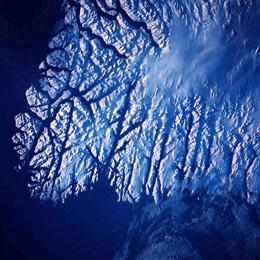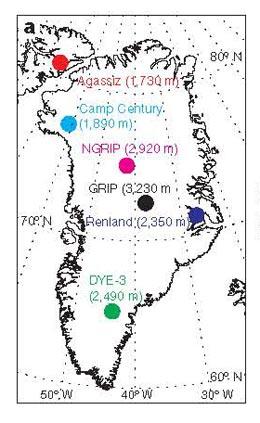Some widget love using the MyBlogLog API
http://mybloglogb.typepad.com/my_weblog
OK, so this might just be the pretty much the most rad thing I have ever seen. Using the MyBlogLog API, check out what MBL member KeyJ63 created!
At first glance it looks like our normal run of the mill Recent Reader widget. You got your recent visitors, a link to join the community and all that jazz. But oh? What is this community tab up top? Clicking on that will pop up an entire screen of awesome.
So in the center there you got your blog community, surrounded by the community’s most recent readers. And from each of those readers, you can see the blog communities they are a member of, and follow the paths and you can find the blogs that your readers have in common.
But the hotness doesn’t stop there. Not only can you drag around the readers and blogs around the screen, go ahead and try double clicking on any of the icons. As if by magic the whole thing mixes up and arranges everything to focus on the selected reader or blog. And if that is not enough, select a reader and up springs a site bio, or select blog and a little window appears and shows you the Alexa page rank and traffic stats. I don’t know about you, but I am definitely super impressed!
Kudos! You totally rock!
Military offers a path to citizenship
( I immediately thought of Robert Heinlein. I read his Lazarus Long books about the Howard Family - including Friday, which was a cute thought - but by the time The Number of the Beast rolled around he was seeming cuckoo: parallel universes, time travel, alternate worlds... The concept of service buying citizenship was undeniably his,though. Oh. He was sarcastic as could be, though an undeniable elitist : and thought much as Mack Reynolds : that military life guaranteed episodes of being sequentially and institutionally screwed by the state. )
NASA Testing Breakthrough In Water Safety
http://www.treehugger.com/files/2009/09/nasa-testing-breakthrough-in-water-safety.php
NYT Investigation Exposes Severity of Nationwide Water Contamination; Corporations Violated Clean Water Act Over 500,000 Times in Last Five Years
http://www.democracynow.org/2009/9/14/nyt_investigation_exposes_severity_of_nationwide
Herbalist Review, Issue 2007 #2: Microwave hazards, cell phones, and cancer
http://www.rmhiherbal.org/review/2007-2.html
Study finds humans still evolving, and quickly
http://www.latimes.com/news/science/la-sci-evolution11dec11,0,5882337.story
Climate change warning from Greenland : Nature News
http://www.nature.com/news/2009/090916/full/news.2009.917.html?s=news_rss
Small rise in temperature thousands of years ago caused rapid melting of the Greenland ice sheet.
 The Greenland ice sheet could melt more rapidly than had been thought as a result of climate change.Getty
The Greenland ice sheet could melt more rapidly than had been thought as a result of climate change.GettyThe Greenland ice sheet melted much more rapidly as a result of warmer temperatures in the recent past than previously estimated, a team of international scientists has revealed. They warn that future warming could have more dramatic effects on the ice than researchers have assumed.
Between 9,000 and 6,000 years ago, Earth went through an unusually warm period. But puzzlingly, unlike data from many other spots in the Northern Hemisphere, measurements of isotopes in ice cores drilled from the Greenland ice sheet (GIS) hasn't reflected that temperature change. So models of the ice sheet's behaviour based on these data have suggested that the height of the ice above bedrock has remained quite stable during the past 12,000 years.
Now, new data from ice cores drilled in six different places on and around the ice sheet reveal that this unusually warm period affected the GIS too, and that in response to these temperatures — which were 2–3 °C hotter than the current temperature — it lost 150 metres in height at its centre and shrank by 200 kilometres at the edges.
Big thaw
A team led by Bo Vinther from the Niels Bohr Institute at the University of Copenhagen, Denmark, analysed the ice cores for evidence of the regional temperature and elevation of the Greenland ice sheet in the Holocene, the geological era that began about 12,000 years ago. Each core is basically a long rod of ice, drilled down 3 kilometres to the bedrock. It is sliced up and the content of particular isotopes, such as those of oxygen, in water and air bubbles from the appropriate section is measured in the lab.
 The researchers analyzed data from ice cores in six different places around Greenland.B. M. Vinther, et al.
The researchers analyzed data from ice cores in six different places around Greenland.B. M. Vinther, et al. To work out the ambient temperature on the ice sheet, the team had to disentangle changes in temperature that were due to the change in elevation from changes in temperature due to climate change — a task that has proved difficult in the past. To do this, they analysed two ice cores from small ice caps that did not form part of the main sheet and which, the researchers believe, did not change elevation. They used these measurements to work out the temperatures on the ice caps, and by comparing these with temperatures obtained from main-sheet ice cores were able to work out the thickness of the main sheet at different times in the past.
"What we can now say for sure is that 8,000 years ago it was in fact 2-3 °C warmer than now, and it was this 2-3 degrees that actually caused quite a bit of melting," says Vinther. "And that of course gives us an indication that if climate was to warm a few degrees, then the ice sheet might start to lose mass again." The team's results are published in Nature1.
Forcing the issue
Eric Rignot, who studies ice and climate at the University of California, Irvine, and NASA's Jet Propulsion Laboratory in Pasadena, is excited by the new result but cautious about applying it to future warming. He is working with others to develop better models of ice-sheet behaviour for use in the next report of the Intergovernmental Panel on Climate Change, with the goal of explaining patterns observed in the past decade.
Canada's role in Depleted Uranium weapons worldwide
The Government of Canada is in non-compliance with the statutes and regulations of the Canadian Nuclear Safety Commission (CNSC), prohibiting the use of Canadian uranium in depleted uranium (DU) weapons. Moreover, Canada has a bilateral nuclear co-operation agreement with the US, under which uranium exports to the US may only be used for peaceful purposes, and not in weapons.
This includes “control over the high enrichment of Canadian uranium and subsequent storage and use of the highly enriched uranium,” a Foreign Affairs document states. The same rules that apply to uranium apply to depleted uranium, according to the CNSC.
DU weapons are considered weapons of mass destruction under international law. Thus Canada may be complicit in the US use of weapons of mass destruction in the 1991 Iraq War I, the 1998 Balkans War, the 2001 War in Afghanistan, and the 2003 Iraq War II, where the British medical journal Lancet estimates that one million civilians have died. In each of these wars, it is likely that depleted uranium in the DU weapons used by the U.S. and the UK comes from Canadian uranium exported to the US and processed in US enrichment plants into depleted uranium and subsequently manufactured into DU weapons.
Depleted uranium is the uranium by-product that remains after the removal of the isotope U-235 during the enrichment process. For every ton of enriched U-235 uranium for the nuclear weapons and nuclear power industries, seven tons of depleted uranium containing the U-238 isotope are made for the munitions, DU weapons, and military armor industries.
“Depleted uranium” is a marketing term of the nuclear industry. U-238 depleted uranium was originally discovered as a poison gas weapon of mass destruction during World War II by the Manhattan Project, at the same time as the atomic bomb and Agent Orange. Because DU is pyrophoric, it bursts into high-temperature decomposition upon impact with military armor, releasing nano-particles of ionizing radiation that contaminate all living things and the environment with deadly radiation with a half-life of 4.5 billion years.
The public military excuse for the use of DU munitions, bombs and kinetic penetrators is that DU is heavy and easily penetrates military armor and other targets. The covert strategic military use of DU munitions, smart bombs, and cruise missiles is radiation contamination of terrain, and low level nuclear war against enemy troops, civilian populations, and all unprotected military troops, for purposes of depopulation.
DU weapons & war crimes
After 3 years of investigation by 60 expert witnesses and jurists at a cost of $1 million raised by Japanese citizens, the International Criminal Tribunal For Afghanistan at Tokyo on March 10, 2004 found President George W. Bush guilty of the war crimes of genocide, crimes against humanity and war crimes for the use of depleted uranium (DU) weapons by US forces in the 2001 war against Afghanistan.
Experts agree that a substantial portion of the depleted uranium in the DU weapons used by the US in Afghanistan came from Canadian uranium. Had the Tokyo Tribunal been diligent, it could have found Canadian Prime Minister Jean Chrétien, who resigned as Prime Minister on December 12, 2003, guilty as an accessory to genocide, crimes against humanity, and war crimes, for failing to enforce Canadian Nuclear Safety Commission regulations, and the Canada-US Nuclear Cooperation Agreement, both of which prohibit Canadian uranium from being used in DU weapons.
Dr. Gordon Edwards, president of the Montreal-based Canadian Coalition for Nuclear Responsibility (CCNR) says,
“Canada may have the policy, but it’s not enforced. The Canadian government is taking directions and orders from the nuclear industry…
“The uranium industry has a vested interest in ensuring its depleted uranium waste makes a profit and is not just left in storage. That’s why some of Canada’s depleted uranium is ending up in weapons, Edwards says.
“The Canadian government can’t even think for themselves.”
Depleted uranium in Hawaii
The depleted uranium that has contaminated the Hawaiian Islands with deadly radiation most probably has a Canadian uranium source.
It is highly probably that the depleted uranium in DU munitions fired at bases on the Big Island and at military bases on Oahu, and in the nuclear weapons stored at Pearl Harbour is derived from Canadian uranium, exported to the US and processed into enriched uranium and DU.
Public health effects of DU weapons
The public health and environmental effects of the use of depleted uranium (DU) weapons can be considered per se violations of the war crime of genocide, crimes against humanity, and war crimes under the Statute of the International Criminal Court.
The demonstrated public health effects of depleted uranium (DU) weapons include:
1.
diabetes
2.
cancer
3.
birth defects
4.
chronic diseases caused by neurological and neuromuscular radiation damage
5.
mitochondrial diseases (chronic fatigue syndrome, Lou Gehrig’s, Parkinson’s and Alzheimer’s disease, heart and brain disorders)
6.
global DNA damage in men’s sperm
7.
infertility in women
8.
learning disabilities (such as autism and dyslexia)
9.
mental illness
10.
infant mortality and low birth weights
11.
increase in death rates and decrease in birth rates
Mafia sank boat with radioactive waste: official
http://news.yahoo.com/s/afp/20090916/wl_afp/italycrimemafiaenvironment_20090916005553
Hat Tip : Tom Usher















